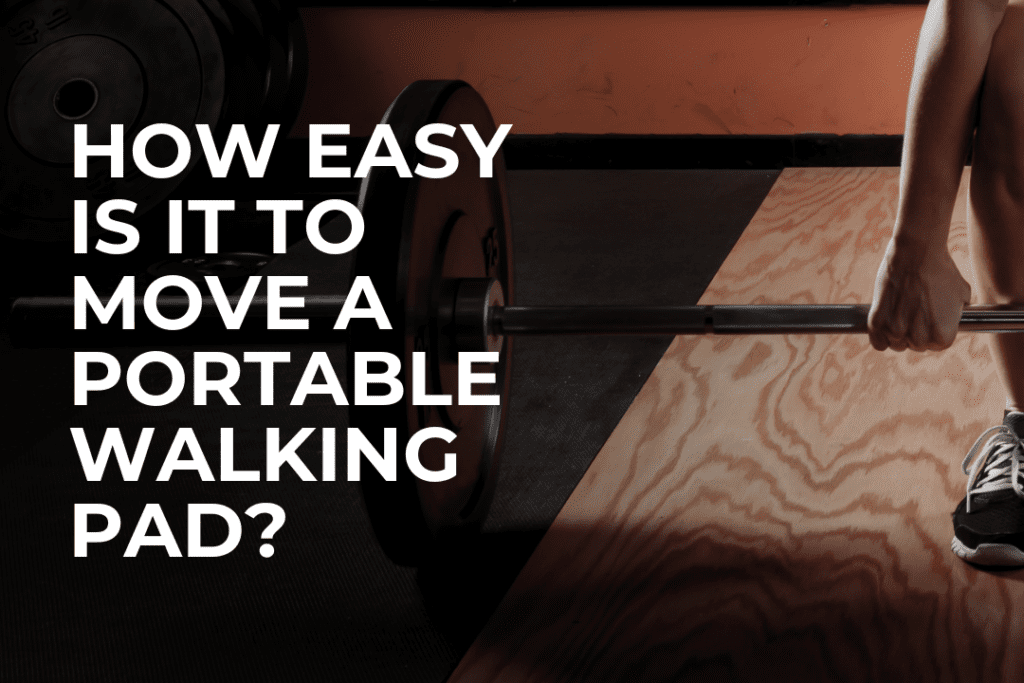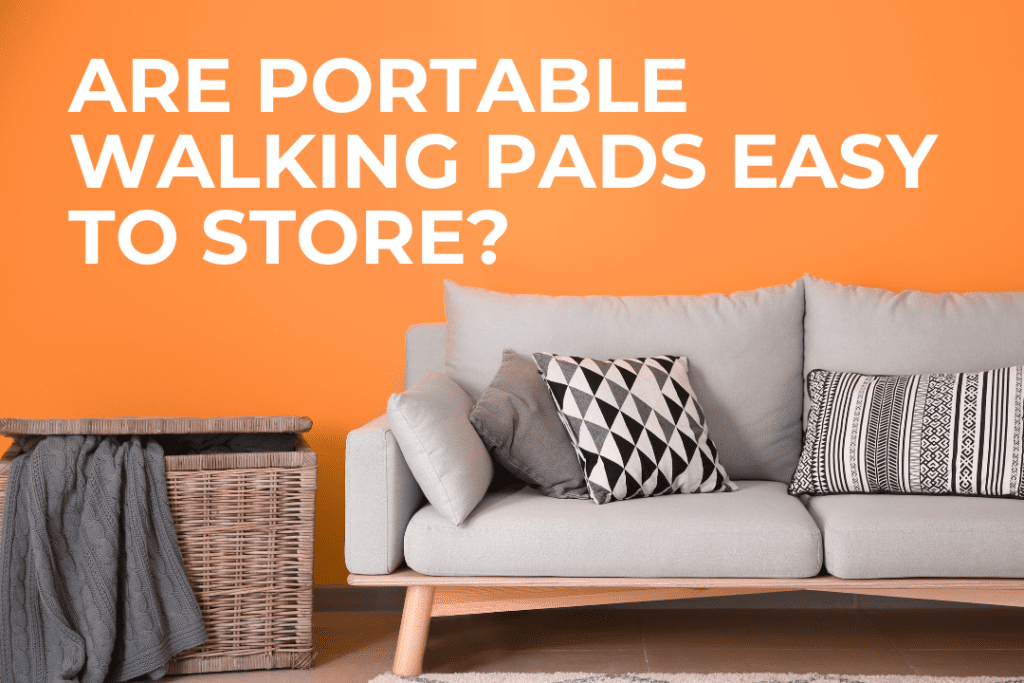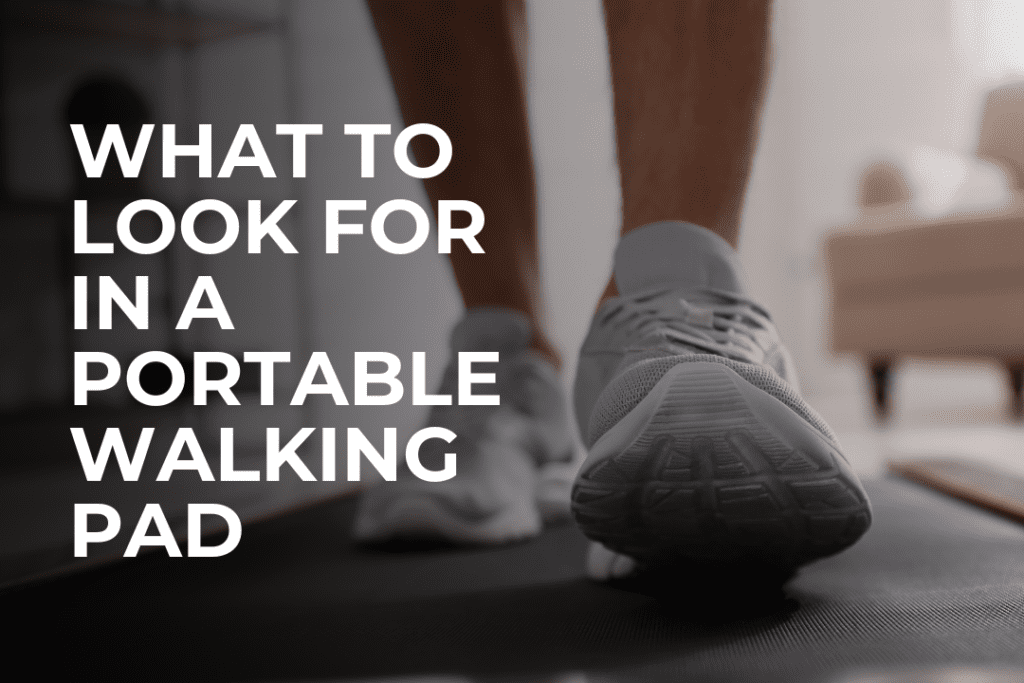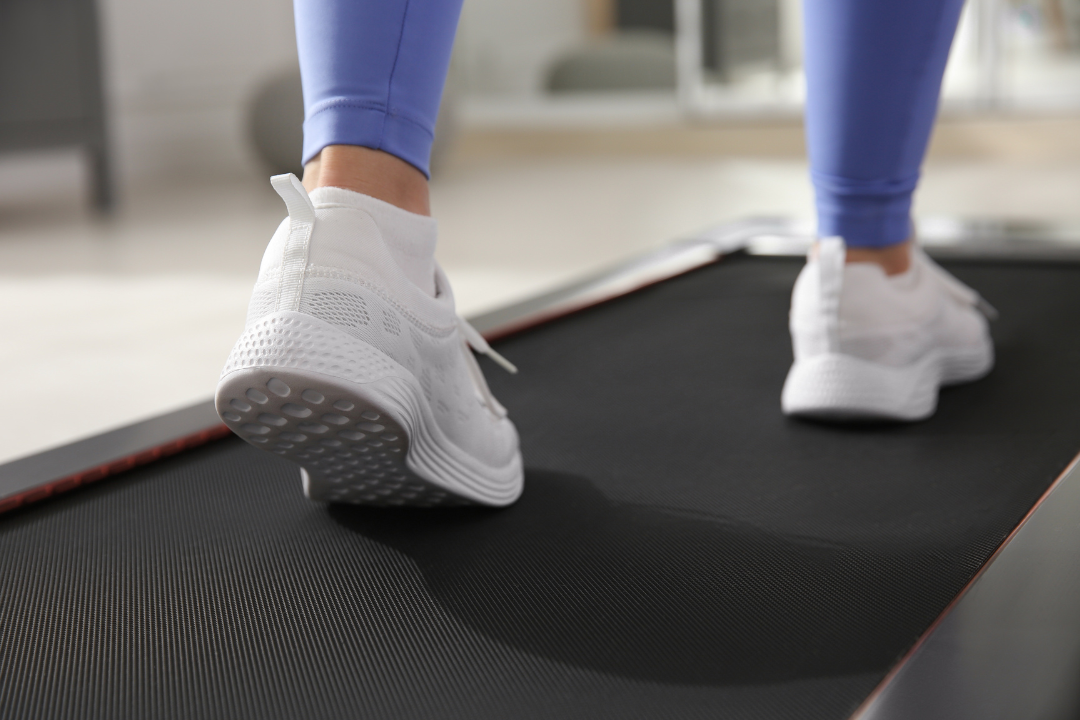Here’s the truth about portable walking pads: they’re not really that portable.
This really gets my goat, so I hope my walking pad review helps you make an informed choice when buying a portable walking pad.
What is a portable walking pad?
A portable walking pad is like a treadmill, but more compact, lighter and supposedly easy to move. They are designed for people with limited space, limited time, those who use stand up desks, as well as people who want to improve their health.
What is a foldable walking pad?
In most cases, a foldable walking pad has handles which fold down. There are a few walking pads where the walking surface literally folds in half — I haven’t tried one of these but am interested to see if they’re more portable than other walking pads.
Why did I buy a portable walking pad?
I train everyday, including lifting weights, walking, interval running and more. I also work from home, which means I sometimes walk 3000 steps a day, which isn’t great for overall health or longevity. I have a fab Nordic Track treadmill which I use a few times a week, but sometimes I struggle to make time to go for a walk or hop on the treadmill… so I figured that a portable walking pad would do the trick — afterall, I could walk and work at the same time, right? That was the theory…

Are portable walking pads really portable?
No, not really.
What are the features of a portable walking pad?
As a consumer, I assumed a “portable” walking pad would be:
- Easy to move
- Easy to store.
Fair assumption right?
Walking pad retailers boast about their “space-saving”, “ultra light”, “ultra thin” portable walking pads, literally saying they are easy to move and easy to store. They show photos or videos of a person:
- Lifting a walking pad
- Sliding it under a couch or desk
- Propping it upright near a wall
They market portable walking pads as timesaving (“walk while you work!”) and great for fitness. While all of the above can be true, let’s step outside the hype and consider if portable walking pads are actually portable.
How heavy is a portable walking pad?
Portable walking pads generally range from 16kg to 28kg, which is 35-61 pounds, the equivalent of a mid-sized dog or a 4 to 8 year old child. My walking pad is above 20kg.

How easy is it to move a portable walking pad?
Considering sellers target adults of all ages and abilities, we have a bit of a problem here. 20kg is not super easy to lift, especially for people who might be new to exercise, recovering from injury or are in their golden years.
I deadlift over 50kg, so I assumed it would be easy enough to move my walking pad — but here’s the reality:
- The motor is at the front, making the walking pad front-heavy;
- The foldable handle doesn’t have a latch to hold it in place, making the walking pad awkward to hold;
- The wheels only go in one direction — forwards and backwards. This means I need to awkwardly shimmy my walking pad into the right place under my desk. If you are hoping to store your portable walking pad under a bed or under a couch, you can only do it by pushing it from behind — this won’t work for everyone, especially if space is limited. Same goes for sliding your walking pad under a stand up desk.
- Once I have shimmied my walking pad into the right place, every time I use it, I need to bend down under my desk, plug it in and flick the on-switch. When I finish, I bend down, turn it off and unplug it, before moving it back to its spot behind my desk. Again, this isn’t easy for some individuals.
For some, this may all sound very doable. But here’s the thing — in James Clear’s book, Atomic Habits, he states that it’s easier to stick to a habit if it’s easy to do, that the third law of behaviour change is “make it easy”. Conversely, the best way to break a bad habit is to make it impractical to do: “Make it unattractive” and “Make it difficult” — increase friction. Buying a walking pad makes walking easy, but its lack of REAL portability makes it unattractive and difficult.

Are portable walking pads easy to store?
It depends on where you will be storing it but my general opinion is: no. Portable walking pads are not easy to store.
I thought I’d be able to store my walking pad folded, facing the wall, between my desk and the wall. Technically, it would fit — but what I didn’t think about was how awkward it would be to move a 20kg rectangle that would probably scuff and scratch my walls and surrounding furniture, or cause injury while I try to move it into place.
Can I store my portable walking pad under my bed or couch?
Sure, if the clearance under your bed or couch is high enough, AND if you can actually move your walking pad under your furniture. Keep in mind that the wheels only move in one direction. You might be able to buy something to help with this.
Can I store my portable walking pad upright?
Some brands claim you can store your walking pad upright, so it’s standing, leaning against or near a wall. BUT these walking pads are heavy — if a portable walking pad falls on a child, dog, or other pet, there is a risk of significant injury, or worse.
Where do I store my portable walking pad?
Unfortunately for me, my walking pad is laying flat behind my desk — effectively making it useless in terms of being a space-saving walking pad. It’s a bit of eyesore, taking up space where a plant could be or a luxurious chaise lounge for reading books.
Can I keep my walking pad under my desk?
You could, if you plan to stand on it all day? I like to sit sometimes or stand using my anti-fatigue mat, so it’s not practical for me to leave my portable walking pad under my desk.

Is it easy to use a walking pad?
Mine has a plug and play design, making it easy to get started. It came with a remote, which means I can adjust the speed fairly easily.
Can I use my portable walking pad with a sit stand desk?
Yes, as long as you can move it into position without injury.
Can I work or study while I use my portable walking pad?
It is definitely possible, but is it ideal? It depends on what you’ll be doing at your stand up desk. If you’re brainstorming, thinking or watching a training video or lecture, yes, it’s easy enough. If you’re typing, using a mouse or doing work that requires precision, my opinion is that it’s too hard to walk and work at the same time — no matter how slow you walk, your wrists and hands will not be steady, making it hard to type or use a mouse. I’m sure quite a few people disagree with me, which is fine.
Can I use my portable walking pad during work meetings?
Again, many may disagree, but I lean towards no. If you’re on a phone call, walking at a slow pace might be doable, but on a video call, it may be distracting to others on the call.
There’s one factor I never considered when it comes to working while using a portable walking pad: sweat.
This equates to choosing specific times to use a walking pad and building in extra time to cool down and get changed after walking. For some of you, this won’t be a problem, but for some of us, it is — just another point of friction when it comes to building a good habit.
Are portable walking pads everything they claim to be?
I’m definitely pro-walking pad BUT if you expect a “portable” walking pad to be easily portable, you may need to reconsider. Just picture where you’ll store it and where you’ll use it, and if you can imagine moving it twice, everyday or everytime you use it.
I should also add that many portable walking pads have a narrow walking belt (40cm), which means it’s easy to step off by accident and risk injury. Some models have a maximum weight limit of about 100kg and my non-expert opinion is that with this lower end model, I’d be surprised if the motor lasts more than a year or two.
Should I get a portable walking pad or treadmill?
If you can move and store your portable walking pad easily, without hassle or risk of injury, then a portable walking pad might work for you, and you might actually love it. If you don’t need to work/study while you walk, I’d probably lean towards choosing a sturdier, purpose-built treadmill, rather than a portable walking pad. Treadmills usually have a more powerful motor, more cushioning, wider surface area, faster speeds, incline and higher weight limits.

What to look for in a portable walking pad:
- Check the maximum weight limit. Portable walking pads often have a lower weight limit than treadmills.
- Check the dimensions of your portable walking pad. Check that it will fit under your desk and where you plan to store it.
- Consider the weight of your walking pad and check if you can easily lift the equivalent weight, keeping in mind how wide/long it is.
- Check if the walking surface is wider than 40cm. 40cm will be okay but I would recommend a wider belt, for safety and peace of mind.
- Check if the walking surface is long enough for your stride. Some are quite short and unsuitable for taller people.
- Consider the incline. Mine is a lower end model with no advertised incline, however it feels like it has a slight incline, making it a little harder to use, which isn’t great when you just want an easy, no-sweat stroll while you’re working.
- If you plan on running on it, check the maximum speed, cushioning and motor.
- Check the return policy and warranty.
- Check their walking pad reviews (ease of use, faults, noise, longevity etc).
- Search for independent walking pad reviews (e.g. CHOICE).
Why I wrote about portable walking pads
Walking pads seem so inconsequential compared to the other topics I could be writing about, but for some of you, I know it’s an investment, that your health means a lot to you and those around you, and that you may be making quite a sacrifice to buy a portable walking pad.
I wrote this article to help you make an informed choice about choosing a portable walking pad. I also wrote it to reduce consumer waste and to take a stand against misleading advertising (hello, ACCC) — portable walking pads are simply not as portable as they claim to be.
Most people, retailers and news outlets have a vested interest in promoting portable walking pads: they’re paid via brand advertising, affiliate links, sponsored posts, articles and editorials. If your favourite website or daily news site is writing about “The 5 best walking pads” or “The best walking pads of 2025” or the “8 Best Walking Pads in Australia”, there’s a good chance they’re being paid. How do you check? They have probably included product links in their article — click on that link and you might see interesting words in the URL, such as the name of their website or affiliate company.
Whilst payment in exchange for content is appropriate in many cases, when media blurs the lines between advertising and articles, or when retailers promise features they can’t deliver — we have a problem.
Disclaimer: The information provided in this article is for general informational purposes only and is not intended to be professional advice. Always seek the guidance of a qualified expert for any specific concerns.

0 Comments